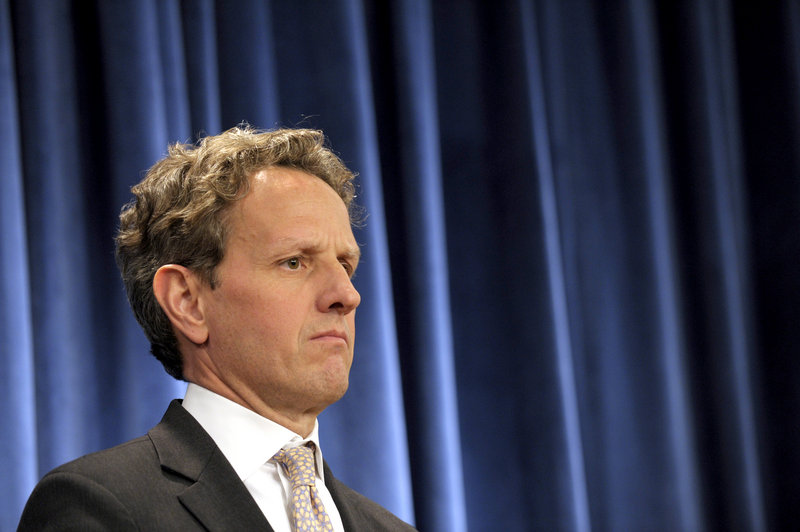WASHINGTON — Social Security is rushing even faster toward insolvency, driven by retiring baby boomers, a weak economy and politicians’ reluctance to take painful action to fix the huge retirement and disability program.
The trust funds that support Social Security will run dry in 2033 — three years earlier than previously projected — the government said Monday.
There was no change in the year that Medicare’s hospital insurance fund is projected to run out of money. It’s still 2024. The program’s trustees, however, said the pace of Medicare spending continues to accelerate. Congress enacted a 2 percent cut for Medicare last year, which kept the trust fund exhaustion date from advancing.
The trustees who oversee both programs say high energy prices are suppressing workers’ wages, a trend they see continuing. They also expect people to work fewer hours than previously projected, even after the economy recovers. Both trends would lead to lower payroll tax receipts, which support both programs.
Unless Congress acts — and forcefully — payments to millions of Americans could be cut.
If the Social Security and Medicare funds ever become exhausted, the nation’s two biggest benefit programs would collect only enough money in payroll taxes to pay partial benefits. Social Security could cover about 75 percent of benefits, the trustees said in their annual report. Medicare’s hospital fund could pay 87 percent of costs.
“Lawmakers should not delay addressing the long-run financial challenges facing Social Security and Medicare,” the trustees wrote.
The trustees project that Social Security benefits will increase next year, though the increase could be small. They project a cost-of-living-adjustment, or COLA, of 1.8 percent for 2013; the actual amount won’t be known until October.
Beneficiaries got a 3.6 percent increase this year, the first after two years without one.
More than 56 million retirees, disabled workers, spouses and children receive Social Security. The average retirement benefit is $1,232 a month; the average monthly benefit for disabled workers is $1,111.
About 50 million people are covered by Medicare, the medical insurance program for older Americans.
America’s aging population — increased by millions of retiring baby boomers — is straining both Social Security and Medicare. Potential options to reduce Social Security costs include raising the full retirement age, which already is being gradually increased to 67, reducing annual benefit increases and limiting benefits for wealthier Americans.
Policymakers could also increase the amount of wages that are subject to Social Security taxes. Social Security is financed by a 6.2 percent tax on the first $110,100 in workers’ wages. It is paid by both employers and workers. Congress temporarily reduced the tax on workers to 4.2 percent for 2011 and 2012, though the program’s finances are being made whole through increased borrowing.
The Medicare tax rate is 1.45 percent on all wages, paid by both employees and workers.
Social Security is split into two funds — one for retirement and survivor benefits and one for disability. The retirement fund is projected to run out of money in 2035 while the disability fund is projected to run dry in 2016. Combined, the two funds will last until 2033.
In the absence of a long-term solution, the trustees who oversee Social Security are urging Congress to shore up the disability system by reallocating money from the retirement program, just as lawmakers did in 1994.
Social Security’s trust funds contain a total of $2.7 trillion. The money is invested in U.S. Treasury bonds. The government has used the cash to pay for other programs.
The trust funds have been paying out more in benefits than they have collected in payroll taxes since 2010. The funds, however, will continue to grow until 2021 because they will earn interest on the Treasury bonds, the trustees said.
Many advocates for seniors worry that Washington is too focused on benefit cuts as a way to shore up Social Security. They argue that the program’s finances are not as dire as some policymakers contend.
“After 77 years and 13 recessions, Social Security continues to prove itself time and again as the most effective public program in our nation’s history, keeping its promise to our seniors, disabled workers, widows and children,” said Rep. Xavier Becerra, the top Democrat on the House Social Security Subcommittee.
Medicare is trickier to address because it has to contend with health care inflation, not just an aging population.
Send questions/comments to the editors.



Success. Please wait for the page to reload. If the page does not reload within 5 seconds, please refresh the page.
Enter your email and password to access comments.
Hi, to comment on stories you must . This profile is in addition to your subscription and website login.
Already have a commenting profile? .
Invalid username/password.
Please check your email to confirm and complete your registration.
Only subscribers are eligible to post comments. Please subscribe or login first for digital access. Here’s why.
Use the form below to reset your password. When you've submitted your account email, we will send an email with a reset code.